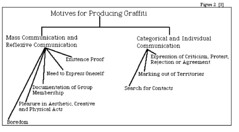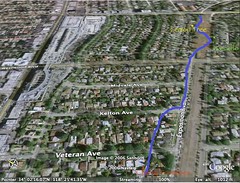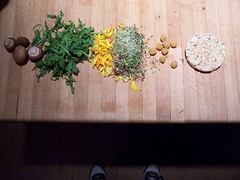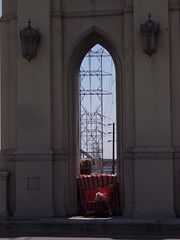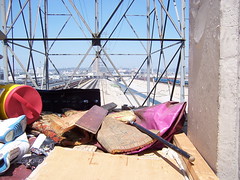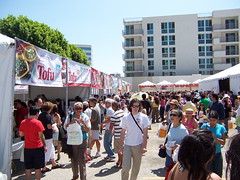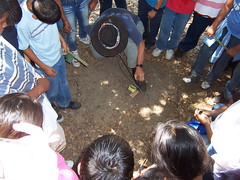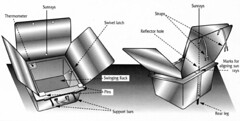Ecovillages:A Practical Guide to Sustainable communities
by Jan Martin Bang
Ecovillages have arisen around the world in response to the social fragmentation of modern life and its alienation from nature. They provide a variety of ways of living in community with others and with nature and are linked worldwide through the Global Ecovillage Network. While interest in this approach to sustainable living is rapidly increasing, there is relatively little literature on the topic and none that brings the design principles of permaculture to bear on the successful design of these communities. Ecovillages explores the new departures in personal, social and ecological living represented by this phenomenon. This book explores the background and history to the ecovillages movement, and then provides a comprehensive manual for planning, establishing and maintaining a sustainable community, using a permaculture approach
The Natural Step for Communities
by Sarah James and Torbjorn Lahti
"resonates that any true sustainable grassroots revolution depends not just on inovation but democratic process"
Maps of the Mind
by Charles Hampden-Turner
An eclectic collection of charts and concepts that illuminate the mind and it's labyrinths.
Street Gallery: A Guide to 1000 Los Angeles Murals
Robin J. Dunitz
Old, but good reference to a wide range of painted, tile and mosaic murals, both interior and exterior, in Los Angeles County. See history through a populist lens and diverse communities in almost every decade for the last 100 years.
Civilizations: Culture, Ambition and the Transformation of Nature
by Filipe Fernandez-Armesto
Felipe Fernandez-Armesto theorizes a resolution to the nature of civilization, that societies become civilized by taming and warping nature. Exploring 17 habitats the book zeroes in on features that reflect the quality of life and source of survival in civilizations across ten millennia.
Gaia's Garden: A Guide to Home-Scale Permaculture
by Toby Hemenway
Easy to use and understand tour through the permaculture garden.
Farms of Tommorrow Revisited: Community Supported Farms-Farm supported Communities
by Trauger Groh and Steve McFadden
Ten examples of CSA (Community Supported Agriculture) farms with first-hand information and advice from the farmers themselves. Valuable to anybody interested in the CSA movement in the United States (or the world), or to farmers wishing to start their own CSA program. Helpful appendices on getting started, acquiring land, sample budgets, and typical CSA shares are included
Fostering Sustainable Behavior: an Introduction to community-based social marketing
by Doug McKenzie-Mohr and William Smith
Published in 1999, this 176-page book details how to uncover the barriers that inhibit individuals from engaging in sustainable behaviours. It provides a set of "tools" that social science research has demonstrated to be effective in fostering and maintaining behaviour change. The guide also details how to design and evaluate programmes. The strategies detailed here, and the methods suggested in order to implement and evaluate them, form the basis of an emerging field that the authors refer to as "community-based social marketing" (CBSM)
Sustainable Cities: Concepts and Strategies for Eco-city Development
Edited by B Walter, L Arkin, R Crenshaw
"Sustainable Cities shows how urban developement and the environmentcan co-exist in a sucessful partnership that will result in better air quality, cleaner water, more nutritious food, less commuting time, quieter and more nature oriented surroundings, a richer community life, less urban stress and improved health for the people who live and work in cities"
Second Nature: Adapting LA's Landscape for Sustainable Living
Edited by Patrick Condon and Stacy Moriarty
TreePeople's grand vision, with practical details for turning L.A. into a sustainable space to live. Site designs for single-family, multiplex, public, and commercial sites.
The First Angelinos by William McCawley
In a well-organized, clearly-written manner, William McCawley has taken the scraps out of the basket and fashioned a beautiful quilt that brings light and life to an oft-maligned people. He has done an amazing amount of research in putting together this volume. If "God is in the details", then it is the details of religion and custom that elevate a people from the mere "diggers" I learned about in school to an intelligent society well-adapted to its environment. This is an essential resource for anyone studying or teaching about California (including fourth-grade teachers), and invaluable to those who simply enjoy learning more about Southern California history.
Discovering Green Lanes
by Valerie Belsey
Valerie Belsey shows how to identify them on the ground, how to recognise them on antique maps, and how to locate documents and other records which will reveal who used them in past times. She also discusses their ecological value, the current controversy about who should be able to use them, and how to get involved in restoring and protecting lanes in your area. Discovering Green Lanes includes useful contact information, key dates in highway history and sample survey forms for recording wildlife in your local green lane.
Extreme Simplicity
by Christopher and Dellores Nyerges
The book describes their efforts to do "integral gardening" on every bit of usable land, to produce food (for people and wildlife), medicines, fragrance, shade, and useful tools. They describe how they went about raising earthworms, chickens, rabbits, bees, a goose, a pig, and their dogs in their typical back yard. The Nyerges' also take the reader along their journey to installing a wood fireplace, solar water heating, and a solar electric system. Though there is much "how to" in this book, it is full of personal stories and rich reading of the learning they experienced along the way. There is a section on recycling, and a unique section about the economics of self-reliance.
California's Utopian Colonies
by Robert V. Hine
Study originally published in 1953, in the years before the hippies and their experiments in communal living-focuses on Fountain Grove, the Theosophical colonies Point Loma and Temple Home, the Icaria Speranza Commune, Altruria, the Kaweah Co-operative commonweath and Llano del Rio. Includes a new introduction by the author, maps, illustrations, bibliographical note, index. xviii, 209 pp.
A Field Guide to Roadside Technology
by Ed Sobey
The author says he was inspired to write the book by the questions his kids asked him on drives and his not being able to provide answers. Sobey's book explains types of bridges, power plants and industrial sites, what all those covers and plates in the sidewalks and streets are, and what all those wires and devices hanging from utility poles do.
City of Quartz
by Mike Davis
Excellent source for political history of Los Angeles this century. Very sensitive to social trends and problems. Well written, with lots of informationthat is relevant today. Also bought Magical Urbanism by the same author but have not read it yet. If you have let me know if you like it or not.
Sustainability on Campus
by Peggy Barlett and Geoffrey Chase
Good source for students who are interested in making changes on campus. Have not finished yet, but looking forward to it. Published by MIT press, which is a pretty good source. Stories about many colleges and how they went about helping some of the ecosystems on and off campus.
Reefer Madness
by Eric Schlosser
I really enjoyed they way this book is formatted with only three main chapters. They all seem disconnected at first but he really pulls them together well. It centers around the black market economy and how it is connected to many different, obvious and not so obvious areas. Fast Food Nation, the authors first book, is also very well written.
Crossing the Rubicon: The decline of American Empire at the End of the Age of Oil
by Michael Ruppert
The introductory chapters include the author's expereince as a police officer witnessing CIA, LAPD and gang involvement in drug trafficing. And how those activities relate and connect to "terrorist" organizations. Well put together timelines of nine eleven and the activities of our white house employees confirm foul play, and constant and consistant perculiarities and incongruencies of different branches of governement were astonishing.

